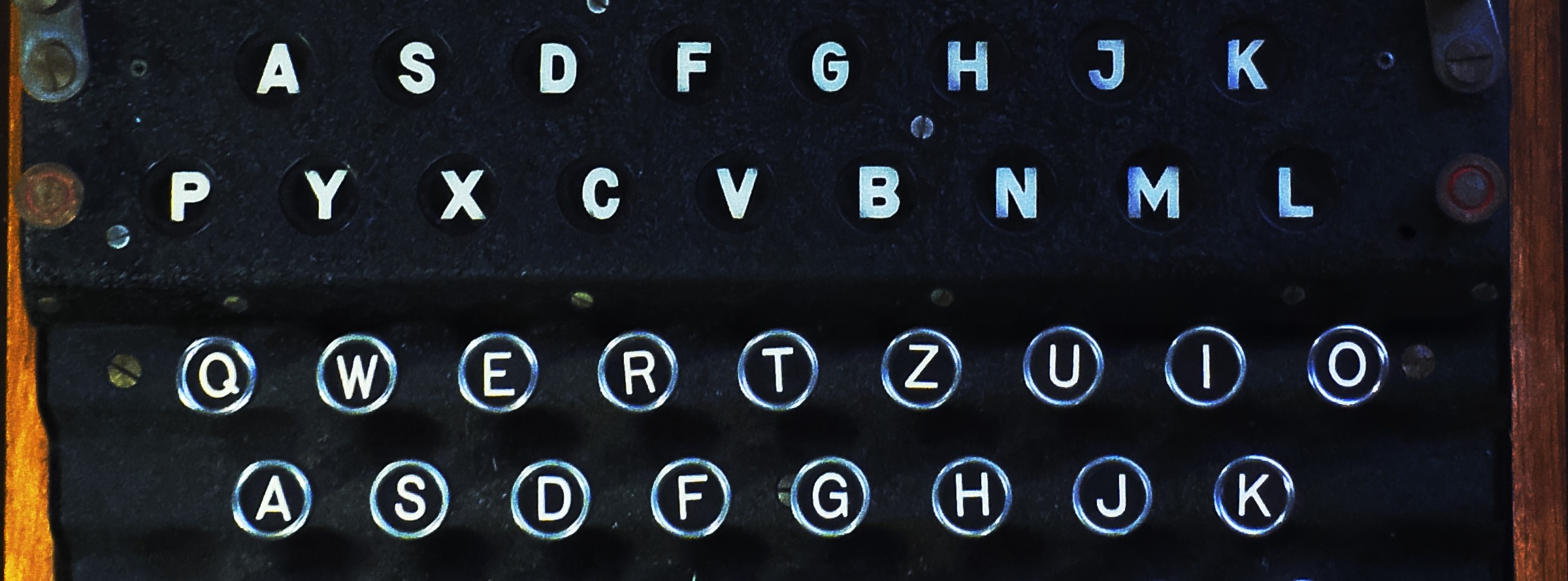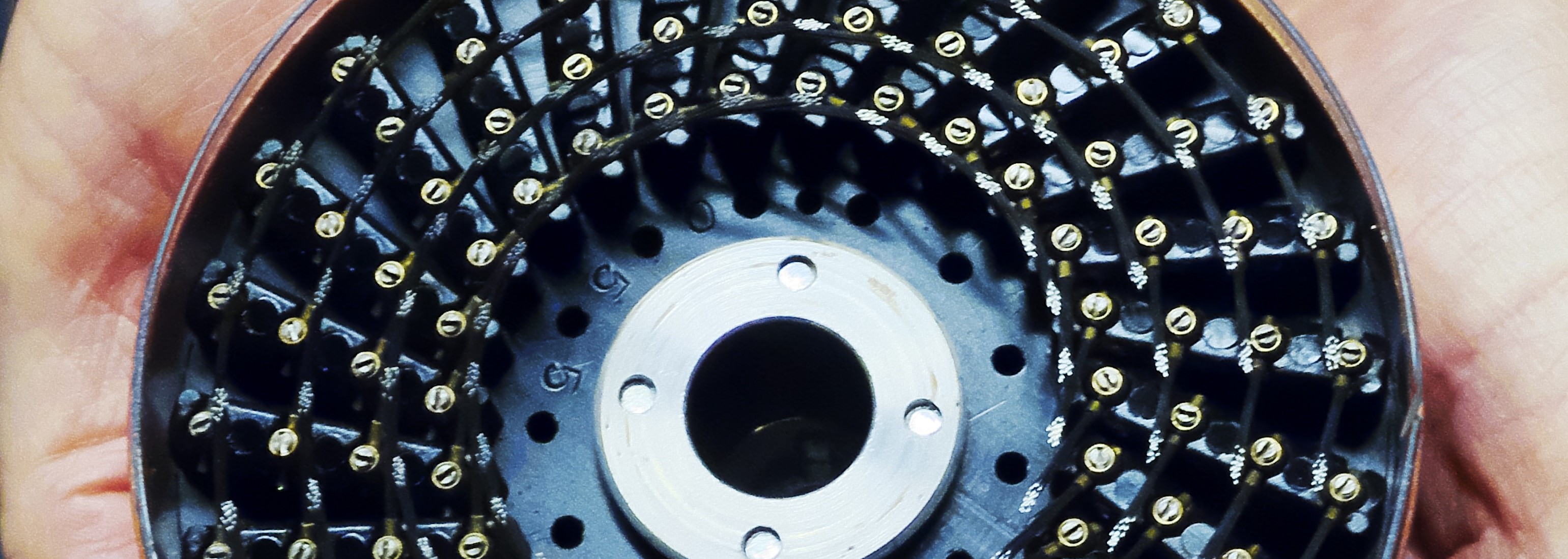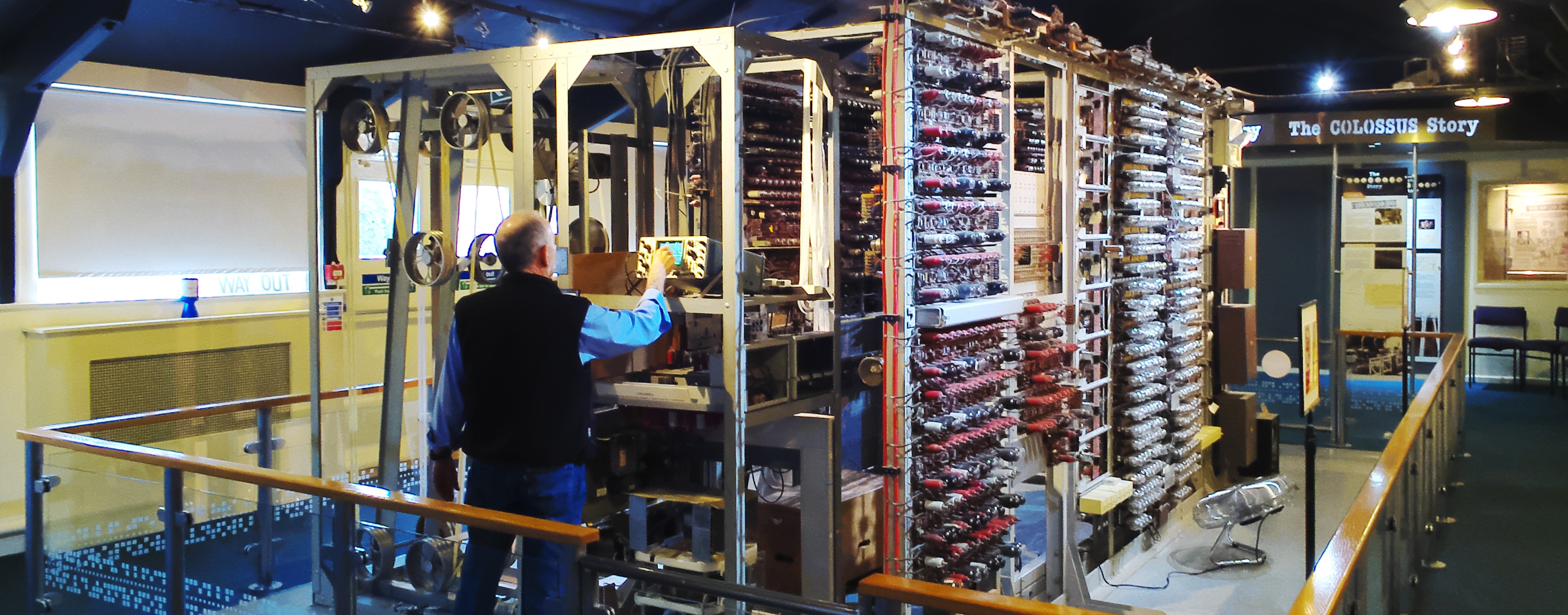Come to Celebrating Bletchley Park and hear about everything below at first hand. You’ll be able to ask questions of all the speakers.
To whet your appetite, many people with interests in the discoveries made at Bletchley Park have written their own histories, or have re-created for modern computers some of the codebreakers’ pioneering hardware. Here is a small, curated collection of things to read, see, hear, and try for yourself.
- Bletchley Park
- Where it all happened. Following advances made in cryptoanalysis by Polish scientists, Britain brought together, at Bletchley Park in utmost secrecy, a unique and un-matched combination of thinkers and engineers who broke many of the enemy codes and thereby shortened World War II. This is a link to the website of the Bletchley Park Trust.
- The National Museum of Computing
- Next door to the Bletchley Park museum is The National Museum of Computing. Here, visitors can see the famous rebuilt Colossus, and operate many of the computers that came after it. This broad collection also includes mechanical calculators, punched-card tabulators, early games computers, and many other examples.
- Tony Sale’s Site
- Tony Sale FBCS (1931–2011) collected on these very detailed pages an enormous amount of information and fun challenges for enthusiasts of codes and cyphers, together with practical simulations of many of the machines used during and after the war to crack encrypted messages. Tony led the reconstruction of the Colossus that now runs at the National Museum of Computing. You will also read, in these pages, how very accurate the Enigma simulations in the film Enigma were.
- Jack Copeland’s Colossus website and book
- This is a masterly description of the history and operation of the Colossus computers, the world’s first programmable electronic digital computers, created at Bletchley Park, then consigned to secrecy until their reconstruction in recent times.
- Bletchley Park Podcasts
- These online radio programmes are full of interviews and features, made for fans of Bletchley Park, codebreaking, history, and many other topics.
- The Women of Bletchley Park
- This revelatory presentation hosted by Google, and written by the Bletchley Park Trust, vividly details the important roles women played at all levels during the codebreaking effort.
- Listening In To Secret Signals
- How did Bletchley Park gather the signals to decrypt? Intercepts were received at secret ‘Y’ stations, often in the countryside so that radio interference was at its weakest. Here is the story of one dedicated woman who transcribed these coded signals at a listening post on a farm.
- Gwen Burton, joining up in 1943 at age 19
- Gwen became a Morse slip reader, and clearly remembers VE Day.
- Women of Bletchley Park
- This insightful TechRepublic article brings together the stories of several of the women who were part of the wartime operation at Bletchley Park. Includes substantial interviews.
- Irene Dixon, audio interview
- One of the Colossus operators seen in the article above, Irene Dixon, was interviewed in December 2015 on BBC Oxford by Kat Orman, on the occasion of computing pioneer Ada Lovelace’s birthday. You can hear the interview by clicking here. Irene has first-hand memories of Tommy Flowers, Max Newman, and talks about the secrecy she needed to endure. Her husband was awarded a medal; but the Official Secrets Act prevented Irene from revealing her role for decades.
- Enigma Simulator
- The most famous technical name associated with Bletchley Park is “Enigma”, the machine whose codes were broken after intensive research by Alan Turing and many others. Here, thanks to expert programming by Louise Dade, you can operate a virtual Enigma, and try coding and decoding messages of your own.
- Practical Bombe and Enigma Information
- Here, read more about the workings of the Bombes, and how they were set-up to discover a particular day’s Enigma settings and thus allow reading of all traffic on that circuit until midnight.
- Bombe Simulator
- To crack the Enigma cypher, Bletchley Park’s Bombes, about 200 of them, were used to discover the starting positions and choice of the encrypting rotors. On this page, you can try using a Bombe for yourself, with full instructions.
- The Alan Turing Archive
- This archive, in on-line and in paper form, contains thousands of articles, diaries, papers and other items written by or owned by Alan Turing.
- Alan Turing—The Enigma
- An expansion of Andrew Hodges’ fine study in book form of Alan Turing’s life and legacy. Contains much extra material to read and view.
- The Real-Life Turing Machine
- To help develop his theories of what is, and is not, possible for computers, Turing created an imaginary device that took input, made a decision, gave output, and used storage. The Turing Machine has often been drawn, but never built: until now.
- Build Your Own Colossus
- Tommy Flowers would have recognised it—and possibly laughed. But almost anyone can build this example of the world’s first programmable digital computer.
- The Alan Turing Institute
- This is the UK’s National Institute for Data Science.
- The Codebreaker who Enabled D-Day
- This full tribute (sadly, also an obituary) to Mavis Batey shows how her analysis broke a particular form of the Enigma code, allowing the Allies to know exactly what mis-information the enemy believed in the days before the D-Day landings.
- What The Imitation Game missed out
- The popular film starring Benedict Cumberbatch focused much attention on a highly fictionalised account of Alan Turing, and (as fictional films must) wrongly portrayed much of his work. For example, although a genuine reconstructed Bombe had been built at Bletchley Park, the film-makers created their own somewhat inaccurate model. And the work of many other pioneers did not make its way into the film script. These letters to The Guardian show some of the omissions and errors.







